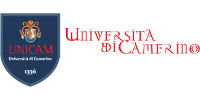PhD in Chemical Sciences | Doctorate / PhD | Science | On Campus | 3 YEARS | University of Camerino | Italy
The PhD program in Chemical Sciences is open to applicants who hold an Italian Laurea or Laurea Magistrale diploma or an equivalent second-level degree (generally equivalent to a Master Degree) obtained abroad.
The main objective of the PhD Course in Chemical Sciences is to offer the opportunity of being part of scientifically stimulating research teams in order to train professionals prepared for research activities in all the innovative fields involving chemical processes, ranging from organic synthesis to material development, from applications to analyses, and from chemical characterizations to assessment of food quality.
During the three years PhD Course the students will have personal mentors who educate them to follow research topics, with the goal to allow the students to become able to formulate a scientific problem independently, propose hypotheses and procedures leading to its solving on an experimental or theoretical level in the different fields of Chemical Sciences. The main research topics are in analytical and environmental chemistry, food chemistry, inorganic chemistry, and organic chemistry:
The research in analytical and environmental chemistry includes the feasibility of CH4-CO2 replacement in marine Natural Gas Hydrate sediments, the synthesis and characterization of nanocomposite functional materials for Li-ion and Na-ion batteries and absorbent/photoactive nanomaterials for energy and environmental applications. Further researches are related to diagnostic methods for characterization, conservation and restoration of cultural heritage, the immobilization technics of dangerous wastes in inorganic polymeric matrices, the chemometric data sets elaboration, and the samples preparation and analysis for the speciation of particular pollutants and analytes in different environmental matrices.
The primary field of food chemistry research is the assessment of food quality by means of development and application of new methods to identify and quantif




